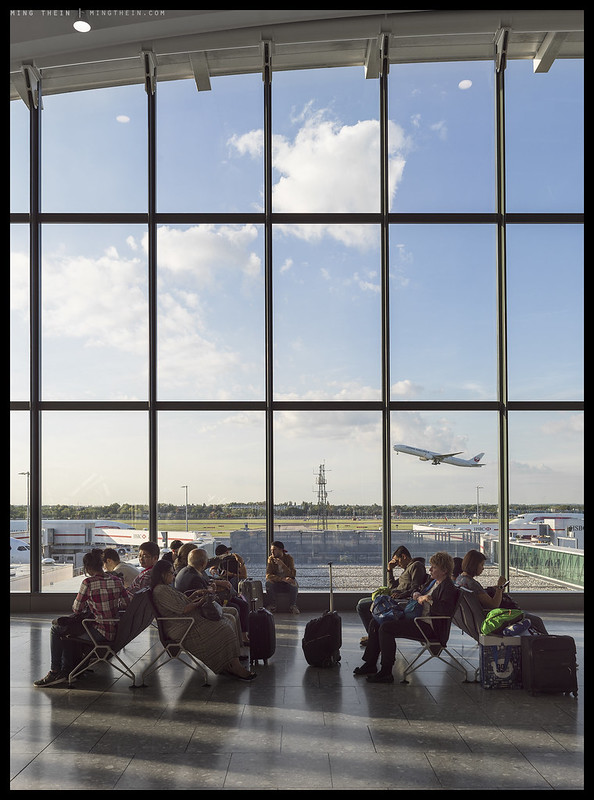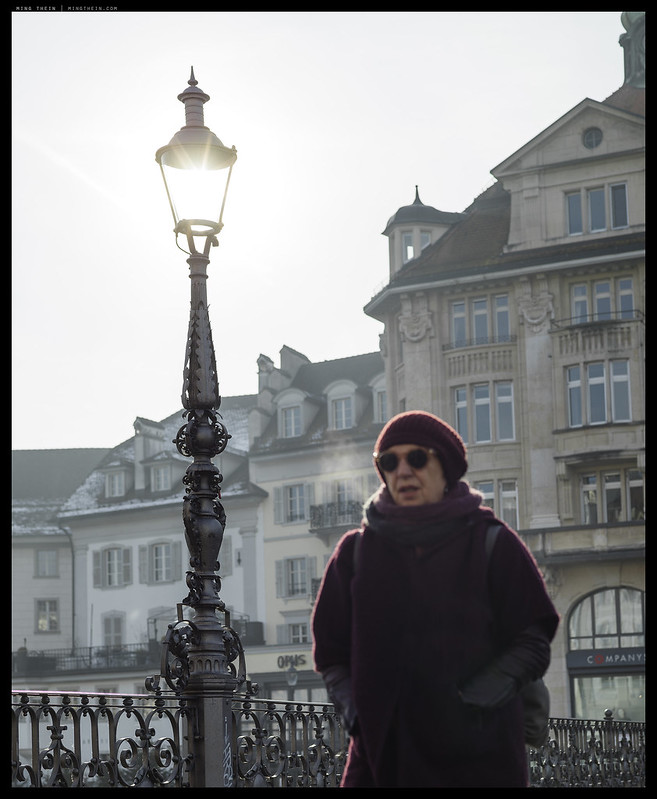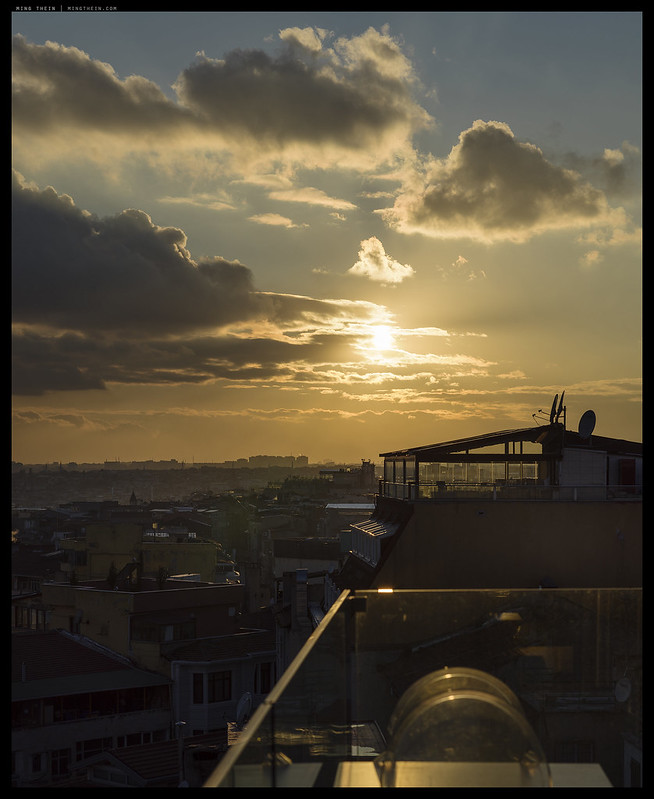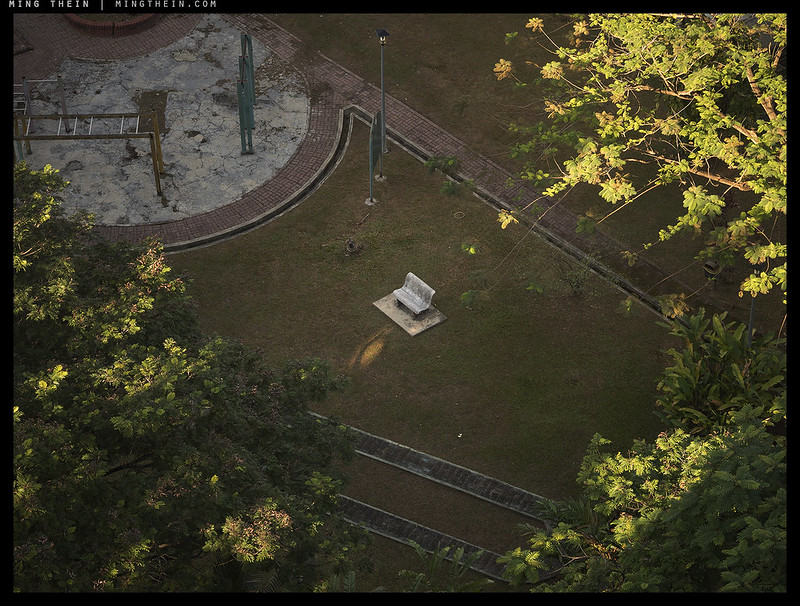In the past, I’ve written about our own emotional/ personal motivations, concepts of idealised hardware and even why hardware itself can be a strong creative motivator. I’ve also talked about the appliance-camera and the ideal format. We’ve defined the concept of a shooting envelope – i.e. the breadth of scenarios under which a camera can deliver most or all of its maximum image quality potential – and the degree to which that’s operator dependent (i.e. heavily). I’ve even talked a lot about what makes sense from a commercial and business standpoint, but I don’t think I’ve ever really examined the experience of the process as a whole – as an enthusiast and hobbyist and somebody seeking enjoyment in both the journey and the results. That’s the purpose of this article.
Firstly, the included images were chosen deliberately to illustrate one point: the concept of transience. The arrangement of subject elements or light didn’t hold for very long; in some cases, the whole scene was almost in continuous flux. Though it’s taken as given that time is not cyclical as we experience it*, and any given set of events and spatial arrangements happens but once – the speed at which said events unfold can of course change dramatically. A studio scene, for instance, is considered static because we can set it up exactly the same again at will. A sporting function or explosion is not, given that events are both causal and may also be destructive. Photography as an art form is arguably at its strongest at the two extremes: when the scene can be set up precisely to reflect the vision of the artist, and when the event is much too transient to observe properly with the naked eye. In both situations, the image fundamentally presents to us something which we cannot easily see otherwise. Without belabouring the point, this is important: if a camera does not enable us to either translate an idea, preserve a moment or present something otherwise unseen: it isn’t very useful as a tool, no matter how pretty or expensive or high-resolving it might be.
*It may well be in other dimensions or to other frames of reference, but that’s beyond the scope of this article and this site.
Shifting gears a bit, let’s talk about shot confidence: how certain are you that you will ‘nail the image’ when you hit the shutter? Moreover, how certain are you that you will be able to get the maximum output out of the system**? Some cameras are better at this than others, and sometimes these parameters change depending on the specific setup. For example: whilst M4/3 has a generally high confidence level, it’s a function of the peak system output not being that high, DOF covering for small focus errors or subject motion between focus lock and capture, and a small sensor meaning light, small lens elements – that can move quickly and focus quickly. The sensor size and resolution is conducive to high readout rates, which in turn means high CDAF speeds. Distilled to its greatest extreme, a very small sensor with fixed focus lens is high confidence – but low potential. On the other hand, you have something like as H6D-100c: if you pair that with say, a manual focus CFE 5.6/350 Zeiss Superachromat from the V system and attempt to shoot that handheld in marginal light, then you’ve got extremely high potential but zero confidence: you’re really asking for trouble. On the other hand, add a tripod and a couple of Broncolor strobes, and you’re talking something else entirely: potential andconfidence.
**For those who argue that sharpness, resolution etc. doesn’t matter – then I’ll argue you should probably buy the most responsive, highest-confidence camera you can, instead of chasing other intangibles. For the rest of us, if we can have it all – why settle?
I think you can probably see where I’m driving with this: what we’d ideally like is high confidence and high potential. Fortunately, what makes the equation simpler for most is that confidence is quite well correlated to potential: the higher the potential, the lower the confidence under most situations – much like a performance car. The caveat is that if you know you’re only ever going to drive on a track, then slicks are fine – but not if you live somewhere tropical that might result in regular deluges. I’d suggest approaching it in this fashion: decide what your most demanding output level is going to be (social media, 4K monitor, small print, large print, super large gallery print etc.) and then go from there. Select the highest confidence system for your specific needs, and do so objectively: even if you emotionally feel you like camera A more than camera B, in the long run, you’ll probably come to appreciate camera B more if it delivers. (A long time ago, I came to this conclusion with my D800E long term review: rational love. It was not a camera that I had any emotional attachment to, but I came to appreciate for its reliability and ability to consistently deliver under a wide shooting envelope.)
The whole topic of confidence rolls up nicely again into the overall shooting experience: if you’re pretty sure you’re going to get the shot, that implies a lot of other ducks must line up correctly too: ergonomics/haptics, responsiveness, autofocus (or manual focus aids), lens quality, shot to shot time, power on times etc. There are a lot of individual parameters that we need to focus on when designing or optimising a camera: for example, whilst high burst rates are nice to have, I’d rather have a burst rate matched to buffer flushing time so that you don’t land up with a long wait after a burst. And I’d much rather have consistent responsiveness – shutter lag, AF lag etc. over just about anything else, but at the same time – if you have a perfect shutter where you can really feel the break point, you might find yourself not needing burst modes at all. Here’s an example: there are compacts that can do 20fps bursts, but you never use them because it’s so fiddly to engage and you land up with caveats like blackout, long buffer clearing, no AF or AE; yet on the other hand, manual film cameras like a Hasselblad V never feel restrictive – because one’s inputs are instant; the camera responds at whatever speed the operator is capable of. Missed shots are not because the camera wasn’t ready or was locked up in some electronic process.
The more complex cameras get – the more important intelligent design and default configuration choices become. The recent D850, for instance, has no fewer than 53 custom functions (not even counting submenus, some nested three levels deep, or other configuration menus) and ~34 external controls (some are capable of multiple functions, for instance the D pad, joystick or drive mode selector). It is insanely configurable – if you cannot make it do what you want, go back and read the manual – but at the same time, intensely confusing if you have not used it for a while. This results in a weird situation: high confidence with familiarity; low confidence with infrequent use. You can however pick up an X1D and pretty much know exactly what it’s going to do based on the home/status screen. The tradeoff is it does less, but at the same time I have to ask myself how often I’ve needed quiet continuous shutter with bursts and multiple image bracketed sequences plus AF tracking. (The answer is never.) We could, for instance, get around the camera shake problem by setting a high default auto ISO shutter speed multiple, but make it adjustable should you want to change it – but by default, there’s no need to. The default configuration out of the box should be the optimal one, not an arbitrary one (as so often happens now). It should almost guide you as to how best to shoot the camera to give the highest confidence result. I have no idea if the other companies think about this, but given the way the cameras are set up (and sometimes controls are duplicated) – I’m not so sure. But I know that we have to: ultimately, if the shooting experience isn’t good, then we simply won’t want to take pictures. MT
__________________
Visit the Teaching Store to up your photographic game – including workshop videos, and the individual Email School of Photography. You can also support the site by purchasing from B&H and Amazon – thanks!
We are also on Facebook and there is a curated reader Flickr pool.
Images and content copyright Ming Thein | mingthein.com 2012 onwards unless otherwise stated. All rights reserved











My needs are simple: shutter speed, aperture, and focus (and focal length if I’m using a zoom). As Rabbi Hillel said, “All else is commentary.”
It seems that modern cameras and photo editing software are so good nowadays that what many of us look for in hardware is no longer on image quality, but rather on usability, including ergonomics, menu design, process of operation, and emotional connection. I’ve never understood why Nikon, Canon, and to a lesser extent Sony (after acquiring Minolta), have never been able to really crack this with their digital cameras, when their film counterparts were so effortlessly simple and, consequently, enjoyable to use. Why depart so sharply from heritage that is so beautiful?
Digital has a lot more control parameters, and in the early days, I suspect there was a lot of tacking on and not so much thought as to how to accommodate these – let alone the same level of automation we enjoy today. Unfortunately, the only real rethink of the whole control paradigm to take into account both usage, automation and the level of control 99% of users require has been the iPhone, as far as I know…
I’ve collected cameras most of my life (42 years, since I was 8) and have thoroughly enjoyed, especially over the last 10 years or so, shooting them. Using so many cameras has taught me exactly what kind of gear I like for the kinds of photos I shoot.
Thank you for giving me the phrase “shot confidence” to help me describe why a camera “feels right.” It’s because I know that with that camera, I’m likely to successfully capture anything I typically want to capture.
Chicken and egg: the more confident you are of the translation, the more experimentation you’re likely to do, too.
Ah, from a Z4 to a modest Mini. Welcome to parenthood.
That, and realizing convertibles in the tropics make no sense at all…between the heat/humidity and torrential rain :p
This was excellent Ming! Very thought provoking. And your pics just keep getting better! Miss you!
Thanks Roger – it’s been ages. Hope you’ve been well!
Thought provoking essay. Timely for me as I am debating whether to keep my Olympus MFT system or to move back to FF (probably the new Sony). The MFT gives me confidence in getting what I need 90% of the time, but the other 10% in terms of DR and the ability to print large isn’t there. What I struggle with is whether the trade offs (more expensive, heavier and possibly more complex system) are worth it. As an amateur I can only afford one or the other.
The answer probably lies in ‘how often would the additional capability make or break the final image?’
There’s a lot of scientific deliberation in your article. Cameras are creative tools not vehicles, I believe there will always be a great deal of subconscious irrationality and emotional connection to the choices that we make.
As a “creative person” I personally see strong parallels between the choice of instrument by a musician and the choice of camera by a photographer. A musical instrument that inspires you to pick it up and create music might not be the most reliable one to use, it might actually be a right royal pain in the arse in many ways, but it’s worth it for the beautiful and often unique sound that it creates and the fact that it inspires you to play it. But of course, if you are a working musician doing gigs every night and you need your instrument to always be reliable, switch on and stay in tune, then your choice will be different.
Professional photographers (should) care about “shot confidence” and reliability but I really don’t see these things being at the top of the list for most enthusiasts / hobbyists. But let’s cut to the chase, if you want to get into the psychology of the majority of photographers out there then all you need to do is browse social media and the groups dedicated to each camera model. There you’ll find a tribal mentality when it comes to brand loyalty that is more akin to football hooliganism than photography. You’ll find an overwhelming obsession for the next best thing; the greatest resolution, the widest dynamic range, the highest ISO and the fastest capture rates. And you’ll find an alarming number of questions along the lines of “Hey everyone, I’ve just pre-ordered a D850, what lens would you recommend I buy for it?”.
I agree on the instrument-camera parallel for the most part, especially now that we don’t have issues akin to ‘some pianos not being able to play all notes’.
Shot confidence: if your camera stops working in the middle of a trip, you will suddenly start to care 😉
And I fully agree on the football hooligan analogy!
For Christmas I want a X1D, A7RIII, D850 and a E-M1 II. Inspirational instruments and shot confidence covered … done and done 😉
Ideally those properties should all be in the same camera…
So an X1D with 5 stop IBIS and R III Eye AF … TAKE MY MONEY!! 😉
…and the gas continues…
Simplicity is the Leica appeal, and priced accordingly. It’s also why I like my Ricoh so much. The GR a small DNG factory, with a great lens and simple user interface, with no bells and whistles. Same is true, to a lesser extent, of Olympus, at least once you’ve set the camera up to taste. My Sony A7II, OTOH, is an altogether different kettle of fish. I must only use a fraction of its features. Out of the box, there wasn’t even an easy way to select the focus point. I had to Google that! Yet the quality of the end result, once the camera is setup, is impressive enough for the price point.
The GR needs you to endure the painful setup process, decide what you want or don’t, and then use it often enough to get familiar with the button assignments. Do it right and you never have to delve into a menu, which is great when shooting, but when you do have to – you’ll never remember where anything is. As for the Sony cameras…I will not repeat what I’ve already said often here 🙂
Agreed, the GR is really simple to use once set up the way you want it. The menus are not very logically ordered but luckily there’s little need to go there after the first couple of weeks with the camera. After that it’s just basically selecting the shooting mode and letting the camera do the rest. Love the output as well, even though it’s not that great ISO 1600 and above. At ISO 100 on the other hand…wow. I’m really hoping mine will last for years to come, it’s the best 320 euros I ever spent on camera gear.
That’s the one bit they’re not so good for: the GR’s lens mechanism tends to be a bit fragile. I know of a lot of people who’ve had to repair theirs, especially if kept in a pocket (presumably due to bumps and dust).
Thanks for a good (as usual, 🙂 ) summing-up!
Well, all of my cameras I have liked have been pretty responsive but have all lacked some (occasionally important) capacity.
But the does-it-all gets, as you say, all too complex.
The only remedy I can think of – beside perhaps having more than one camera (which means choosing the right one…) – is camera software that allows one a SIMPLE way to disable features AND knobs one doesn’t use (or to enable only what one does use). One might end up with a couple of choices, e.g. general slow shooting, sports, birds – or whatever ones interests are.
Or, a sort of guided setup process and no hard-button assignments – you save each one as you wish for each scenario, and then work accordingly. We’d probably also need tiny OLED displays so we don’t forget…or, back to simplicity and really cutting out the stuff we don’t use 99% of the time so there’s no possibility to mistake it at all.
Yes.
…and:
( in addition to that mini display )
ONE dedicated button in an out of the way place:
One press shows the main points (editable) of the configuration on the main screen, a second press shows the enabled knobs & buttons with their functions (not editable), the third press returns the screen to normal.
Love the fourth photo, several stories in it.
And the fifth.
( That empty park bench, in #6, I wouldn’t sit down there, in the *middle* of an empty space…)
Thanks – I wouldn’t (and didn’t) sit there either!
Very good article as always Ming, except the choice of words. I’m a European photographer – and I don’t shoot, I take (or make if you will) pictures. Let the Americans use their cowboy-style jargon, but we shouldn’t be lazy and simply adopt it. Taking the longer words and descriptions shows that you’re at least thinking about it.
I shall get my horseless carriage then! 😛
Right!
But there *is* a kind of language economy in the American use.
In music: doing a gig,
in photography: doing a shoot.
Absolutely right, Ming.
When choosing a camera, it’s better to use your head than your heart. (Kind of like a daily-use car, I suppose).
Counterpoint: a Camry might get you from a to b every day for a decade, but it’ll never make you want to take it one mile further. For something functional, that’s fine, but for something that’s meant to be a creative tool…less so.
This is an interesting way to frame equipment selection, and there’s some parallel to motorcycling. A lot of enthusiasts get caught up in horsepower ratings, fancy electronics, and aggressive styling, but there’s much to be said for getting a bike that inspires confidence, as long as its limits are at least as high as your application’s demands. Any additional capability that may come at the expense of confidence isn’t really rational. Of course, we’re not really into this — motorcycles, cameras — because it’s rational.
Not rational at all, and I suppose the irrationality of what drives motivations for art to begin with in some ways carry over to the method, too. Not personally familiar with motorcycles – riding is asking for serious injury in this part of the world – but certainly with cars there seems to be a sweet spot in horsepower / power to weight ratio above which you a) can’t deploy very often, if at all, and b) can get you into a lot of trouble very quickly if something goes wrong. After considering a lot of older exotic and newer tuned metal I landed up finding balanced happiness with a Mini of moderate power, but very high deployability…
Not only blown away by your photos, Ming. But the article is EXTREMELY thought provoking, and one which will be very useful in trying to help advise younger photographers who are suffering from an attack of GAS.
I think gas isn’t necessarily bad, but we just need to make sure it’s for the right reasons… 🙂
that 107 Lavender St bus pic is unreal. wonderful
Thanks – the joys of night reflections!